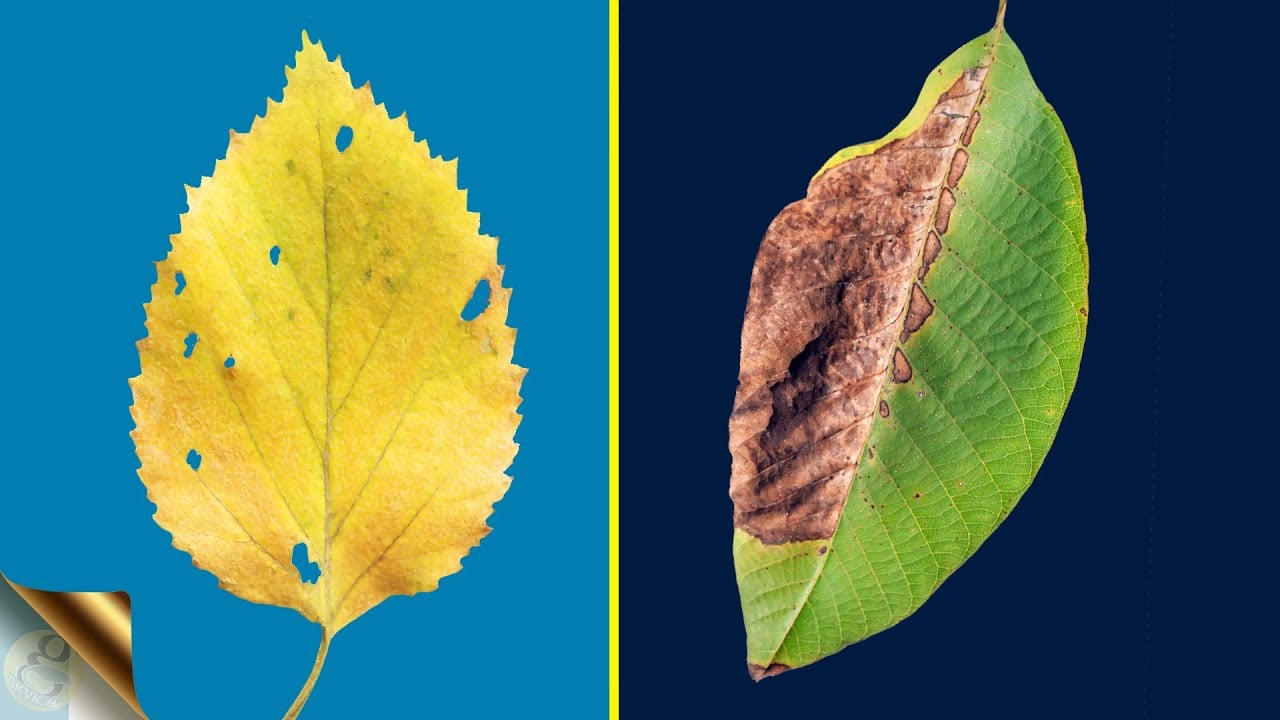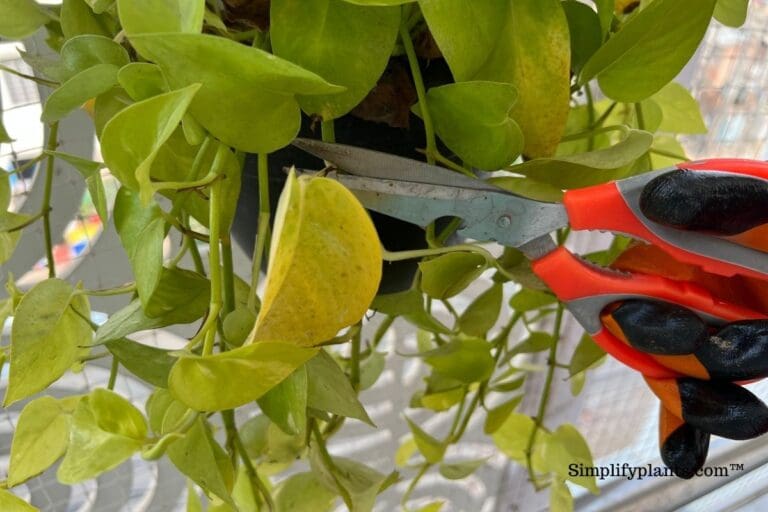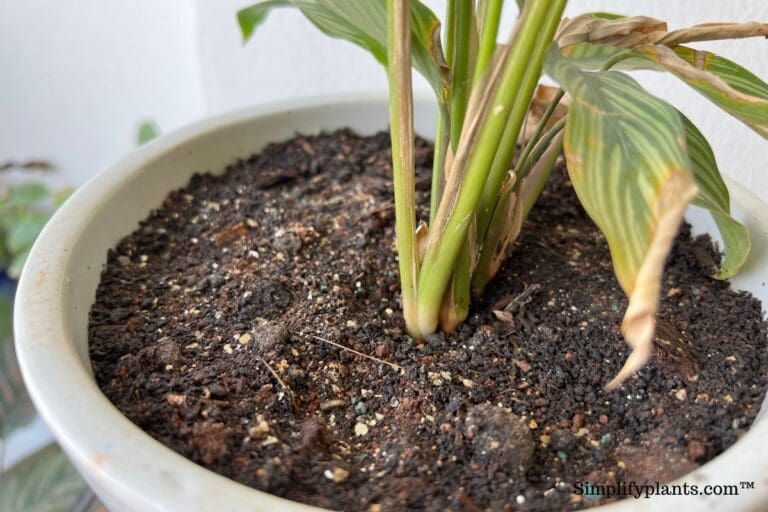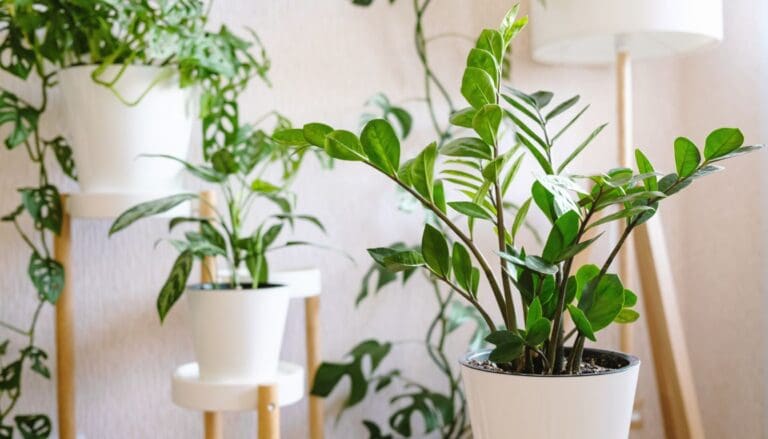5 Signs Your Houseplant Is Overheating in the Sun and How to Cool It Down
I love having houseplants in my space, but sometimes the sun can be a little too much for them.
It’s easy to miss the signs that my plant is getting overheated.
Knowing what to look for helps me keep my plants healthy and happy, even on the hottest days.
Watching for these signs means I can act fast before my plants start to suffer.

Please note: Simplify Plants is reader-supported. As an Amazon Associate, I earn from qualifying purchases made by our readers with no extra cost added to you all! Some links in the post are affiliate links and I get a commission from purchases made through links in the post.
1) Leaves turning yellow or brown
One thing I always watch for is when my houseplant’s leaves start to turn yellow or brown.
This color change is often a sign that my plant is getting too much heat from the sun.
If the leaves were once bright green and now look faded or splotchy, I know something is wrong.
Yellow patches can show up first. Sometimes, they turn brown at the edges or tips.
When my plant gets too hot, the sun can dry out its leaves.
Dried-out leaves feel crispy and brittle. I try to touch a leaf gently to see if it’s still soft or if it’s turning stiff from the heat.
Direct sunlight can burn leaves, especially on plants that prefer shade or filtered light.
If I leave my plant too close to a window without moving it or providing shade, the leaves can get damaged quickly.
I check both the top and bottom of the leaves.
Sometimes, the side facing the window changes color first. If I see a yellow or brown spot growing bigger, I move my plant to a cooler spot right away.
Plants can also get yellow or brown leaves from other problems.
But if I notice this change soon after a heatwave or a sunny week, it’s often because of overheating.
When I water an overheated plant, I make sure to give it a break from direct sun.
This helps keep its leaves looking healthy and green.
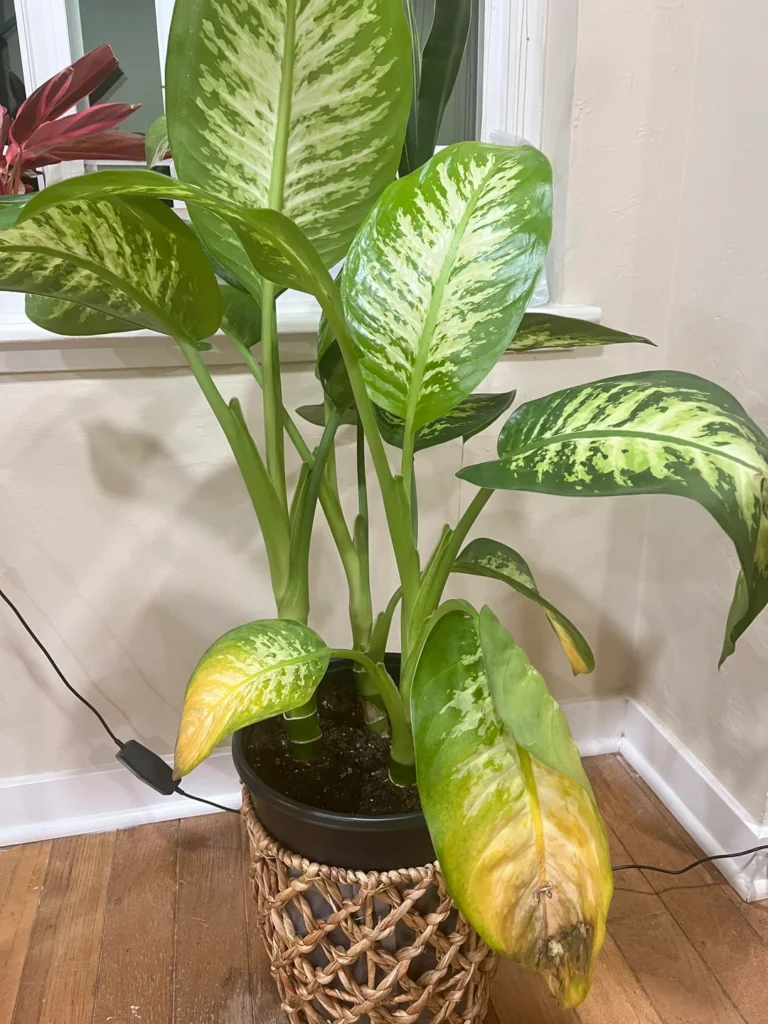
2) Dry, crispy leaf edges
One thing I always look for is dry, crispy edges on my plant’s leaves.
When leaves get too much sun and heat, the moisture inside escapes quickly. This can leave the outer edges looking brown, brittle, or rough.
I notice these crispy areas often start at the tips and work their way along the sides.
Sometimes, I even feel a crackling sound when I touch them. It’s a clear sign my plant is losing water faster than it can absorb.
It’s easy to confuse this with normal aging, but overheating makes it worse, and it spreads faster.
If my plant’s soil is still damp but the leaves are dry and crunchy, I know heat and sunlight are causing the problem.
Whenever I see these signs, I try to move my plant to a cooler, shadier spot right away.
I also check the leaves for any other damage, because crispy edges often mean there’s more stress coming if I don’t act quickly.
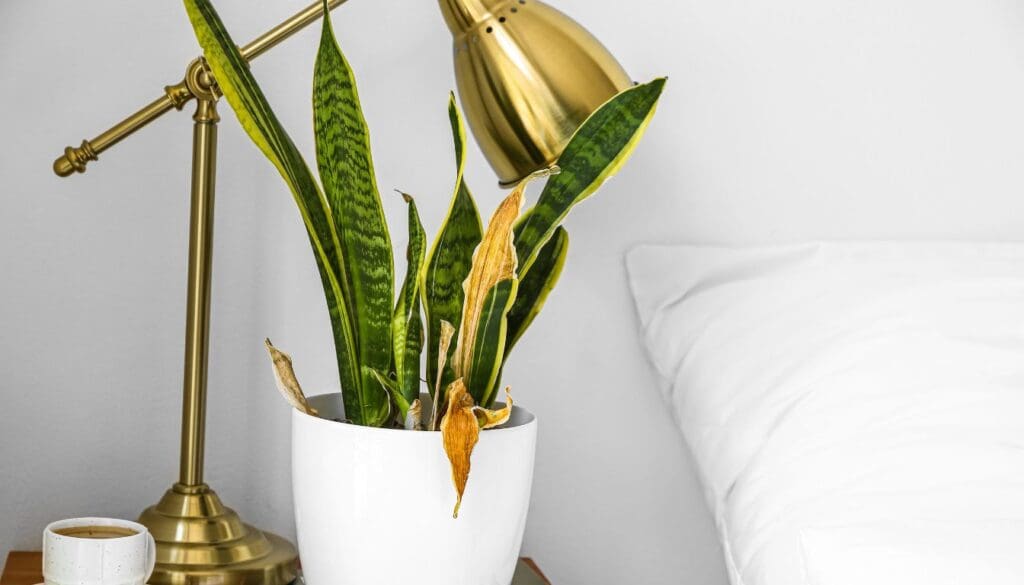
3) Wilting despite watering
I always check my plants to see if their leaves look limp or droopy.
If I water them as usual and they still wilt, it’s a sign that something might be wrong.
Wilting doesn’t always mean my plant needs more water.
Often, when my houseplant gets too much sun and heat, the soil dries out faster, but sometimes the plant can’t take up water fast enough to keep up.
When my plant overheats, the roots may struggle to absorb water, no matter how much I give it.
This means the leaves can wilt even if the soil is damp.
If I notice my plant wilting after moving it to a sunnier spot or during a heat wave, I know it’s time to check if it’s just too hot.
Wilting that doesn’t improve after watering is a big red flag for overheating.
I make sure to touch the soil to see if it’s moist.
If it is, but my plant still looks sad, I try moving it to a cooler spot with less direct sunlight.
4) Sunburn spots on leaves
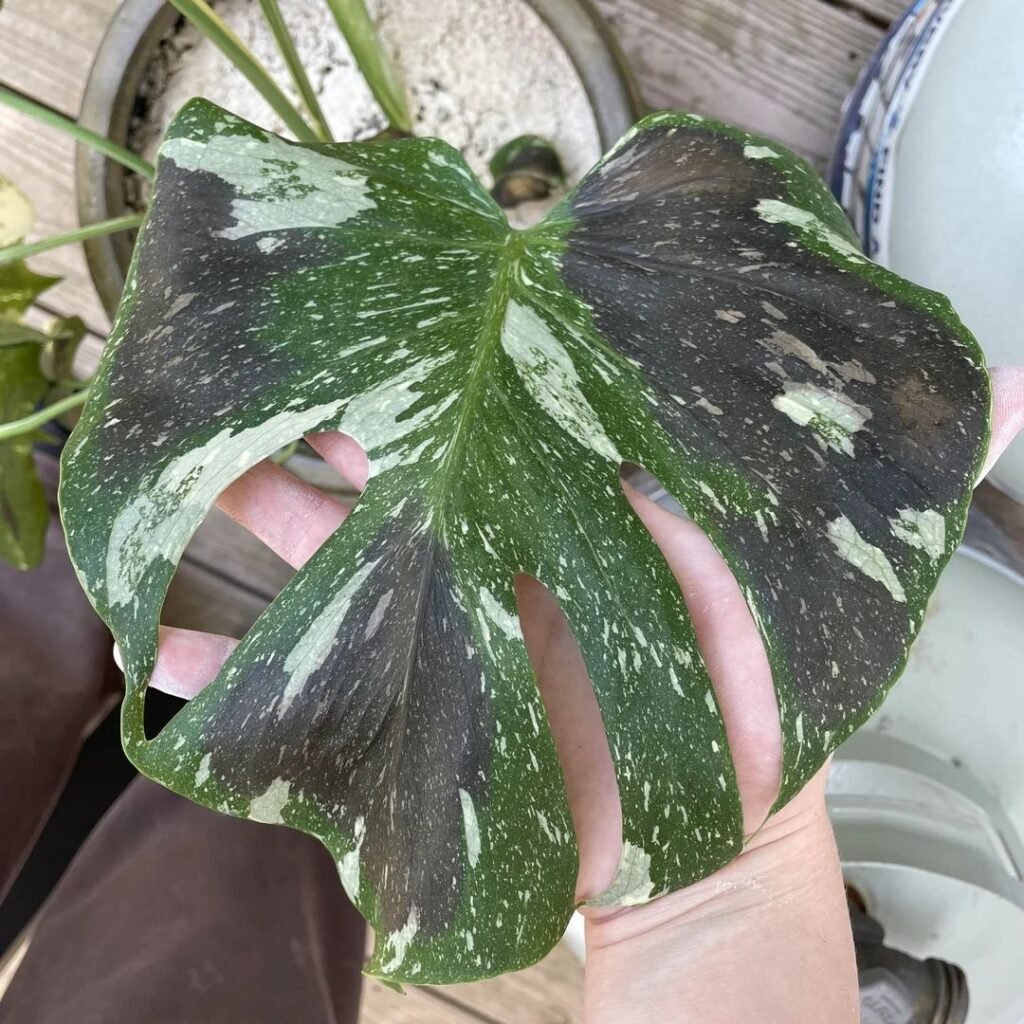
I’ve noticed that sunburn spots can appear when my plant gets too much direct sunlight.
These spots usually show up as white, brown, or yellow patches on the leaves.
Some spots might look dry and crispy, while others could be a bit soft.
The damaged areas often won’t heal, but new leaves might be healthy if I move the plant to a safer spot.
Sunburn is most common on the parts of the plant that face the sun.
I often see it on the upper leaves and the edges.
Sometimes the spots look like speckles, or they could cover large sections of a leaf.
If I catch it early, I can usually prevent more damage by moving my plant out of harsh sunlight.
If I notice these spots, I try not to panic.
I gently trim away the worst leaves and make sure to keep the soil moist, but not soggy.
Bright sun can be strong, even if it’s not hot outside.
A sheer curtain or a shady spot can help protect my plant from more sunburn.
5) Soil drying out faster than usual

I always keep an eye on how quickly my plant’s soil dries out.
If the soil feels dry just a day or two after watering, it’s a clear sign something’s off. Overheating from too much sun can make water in the soil evaporate much faster than normal.
When my plant is healthy, the soil should stay damp for a few days after watering.
But if I stick my finger in and the dirt is bone dry, it could mean the heat is sucking all the moisture away.
Dry soil can stress the roots and cause the leaves to wilt.
My houseplant might even look droopy or weak, even though I just gave it a drink.
Sometimes, the surface feels dry while deeper down, the soil is still a little moist.
I use a wooden stick or finger to check below the top layer and make sure.
I’ve also noticed the pot might feel hot to the touch.
Warm pots speed up water loss and make it harder for my plant to stay hydrated.
If the soil is drying out much faster than before, I move my plant away from direct sunlight.
I might even consider using a bigger pot or adding some mulch to help keep moisture in.
How Sun Exposure Affects Indoor Plants
Too much sunlight can stress my houseplants, while not enough light leads to weak growth.
Knowing how heat and light work in my home helps me keep my plants healthy and vibrant.
Understanding Heat Stress in Houseplants
When my houseplant sits in direct sun, it can overheat.
Heat stress happens if the leaves get hotter than what the plant can handle. Signs include leaves turning yellow, crispy edges, or drooping even after I water them.
Overheated plants may stop growing or lose their shine.
I also notice the potting soil dries out fast, which makes it hard for roots to absorb water.
If I keep my plant near a window with sunlight blasting through, it’s easy for these problems to start.
To help prevent heat stress, I check leaves every day and move plants away from hot windows when needed.
I also use a fan or open a window for air flow.
Key signs of heat stress:
- Wilting or curled leaves
- Brown tips or edges
- Soil dries out quickly
Differences Between Direct and Indirect Sunlight
Not all sunlight is the same.
Direct sunlight means the sun’s rays hit my plant straight on. This often happens in south or west-facing windows. Some plants, like succulents, love this, but many houseplants get burned.
Indirect sunlight is sunlight that passes through curtains, blinds, or reflects off walls.
Most indoor plants, like pothos or ferns, like this soft, diffused light better. It keeps leaves from getting scorched while still letting plants photosynthesize.
I use this simple checklist to know the difference:
- Direct sunlight: Bright, hot spots; sunbeam touches the leaves
- Indirect sunlight: Bright light, but leaves don’t get hot to the touch
- Low light: No sunlight spot, just ambient light
Placing my plant in the right spot matters a lot.
I avoid putting shade-loving plants in strong direct sun to keep them safe from overheating.
Caring for Overheated Houseplants

To help my houseplants handle hot weather, I focus on where I place them and how I manage their water and humidity.
Picking the right spot and adjusting care routines makes a big difference.
Best Placement Tips During Hot Weather
I move my plants away from direct sunlight, especially in the afternoon when the sun gets ridiculously strong. Bright, indirect light is usually enough to keep them from frying. Sometimes I’ll just toss up a sheer curtain or scoot the pots back from the window if things are feeling extra toasty.
Bigger plants? I like to tuck them near walls or stick them in corners where the air stays a bit cooler. For the tiny pots, I’ll set them on a tray with pebbles and water, just to keep them off any hot surfaces.
If I’m putting plants outside, I hunt for shade under trees, porches, or sometimes just throw up a shade cloth if I’m feeling fancy—or desperate.
Here’s a quick table I use when I can’t decide where to put what:
| Plant Type | Best Spot in Hot Weather |
|---|---|
| Succulents | East-facing window, filtered sun |
| Ferns | North room, away from windows |
| Flowering plants | Light shade, inside or outside |
Adjusting Watering and Humidity
I check the soil every day—just poke a finger in there. If the top inch feels dry, that’s my cue to water deeply and let the extra drain out. I really try not to let water sit in saucers; learned that lesson the hard way with root rot.
Keeping the air moist is a bit of a game. I mist the leaves in the morning, mostly for my tropicals. Sometimes, I’ll set a shallow tray of water and pebbles nearby for a little extra humidity.
I don’t overwater, even in the heat. Too much water really messes with the roots. If it’s super hot, I might water a bit more often, but I keep it light. Good airflow is a lifesaver for plants when it’s sweltering.
Frequently Asked Questions
Sometimes my houseplants get way too much sun and start showing signs like yellow or brown leaves, wilting, or sunburn spots. Figuring out what these symptoms mean helps me jump in before things get worse.
How can I tell if my houseplant is getting too much sunlight?
I look for yellow, brown, or crispy edges on the leaves. If one side of the plant looks faded or bleached, that’s usually a sign it’s getting blasted by the sun. Wilting when the soil’s still moist? Yeah, that’s another red flag.
What are the signs of leaf scorch in my indoor plants?
Leaf scorch looks like brown tips or edges on the leaves. Sometimes I’ll spot little white or tan spots in the middle. If it gets really bad, the leaves dry up and might even drop off.
How does intense sunlight affect overall plant growth?
If my plant gets too much sun, it’ll stop growing or just slow way down. The leaves might shrink or turn pale and thin. Sometimes it feels like the plant’s just trying to survive, not thrive.
What should I do if my plant’s leaves are wilting or turning brown?
I get the plant out of direct sunlight and check the soil. If it’s dry, I water it—careful not to overdo it. I’ll trim off any brown or scorched leaves with clean scissors to give the plant a fighting chance.
Is it possible for plants to receive too much light from artificial sources like grow or LED lights?
Yep, plants can get too much artificial light too. If I leave my grow lights on for ages or put them way too close, I’ll see burn spots, crispy edges, or faded color pop up.
How can I differentiate between overwatering and heat stress symptoms in my plants?
With overwatering, I notice yellowing and soft, mushy leaves. The soil just stays soggy, almost annoyingly so.
For heat stress, the leaves usually get dry and crispy with brown spots. The soil will feel dry, and sometimes the plant wilts even if I’ve just watered it—super frustrating, honestly.
Recommended Garden Supplies
| Product Image | Our Recommended Gardening Supplies | Check Offers! |
|---|---|---|
Top Top
Top
Top
Top
Top
Top
Top
Top | rePotme Houseplant and Tropical Classic Potting Soil Mix | Check Offer On Amazon |
 Top
Top
Top
Top
Top
Top
Top
Top | Espoma Organic Indoor Plant Food | Check Offer On Amazon |
 Top
Top
Top
Top
Top
Top
Top
Top | GooingTop LED Grow Light 6000K Full Spectrum Clip Plant Growing Lamp | Check Offer On Amazon |
 Top
Top
Top
Top
Top
Top
Top
Top | Soil Moisture Meter | Check Offer On Amazon |
 Top
Top
Top
Top
Top
Top
Top
Top | Govee Hygrometer Thermometer, Bluetooth Enabled! | Check Offer On Amazon |
 Top
Top | LEVOIT Humidifiers for Large Room(Best For Plants) | Check Offer On Amazon |
 Top
Top
Top
Top
Top
Top
Top
Top | Upgraded DIY Automatic Drip Irrigation Kit, 15 Potted Houseplants Support | Check Offer On Amazon |
 Top
Top
Top
Top
Top
Top
Top
Top | Stainless Steel Heavy Duty Gardening Tool Set | Check Offer On Amazon |
 Top
Top
Top
Top
Top
Top
Top
Top | Bonide Insecticidal Soap | Check Offer On Amazon |
 Top
Top
Top
Top
Top
Top
Top
Top | Bonide 32 oz Spray Neem Oil for Organic Gardening | Check Offer On Amazon |
 Top
Top
Top
Top
Top
Top
Top
Top | Garden Safe Fungicide | Check Offer On Amazon |

